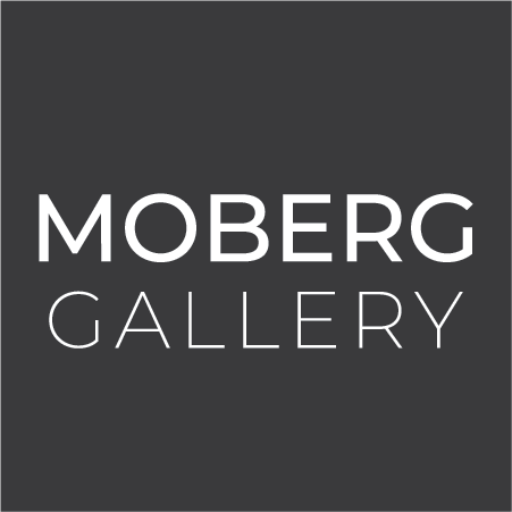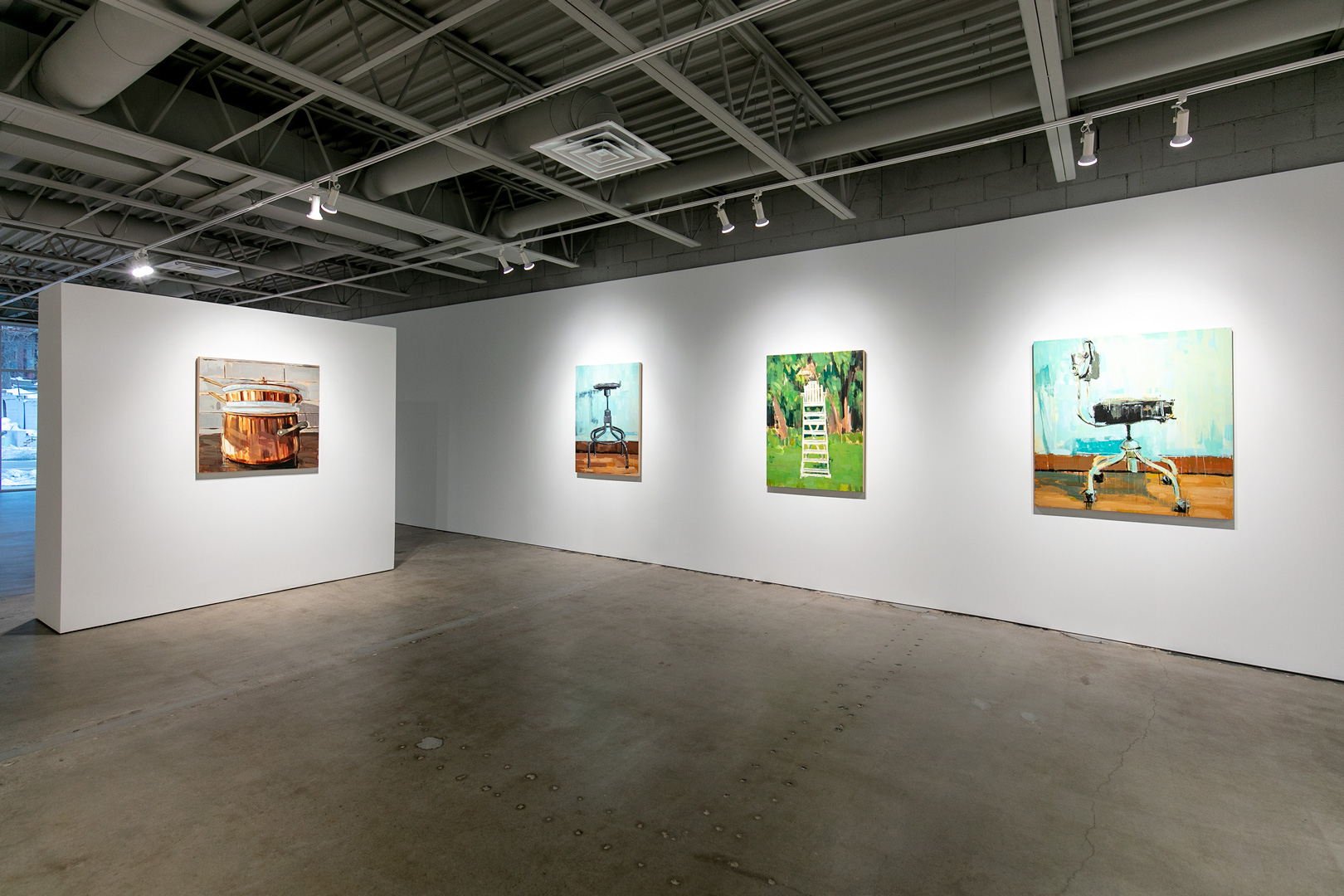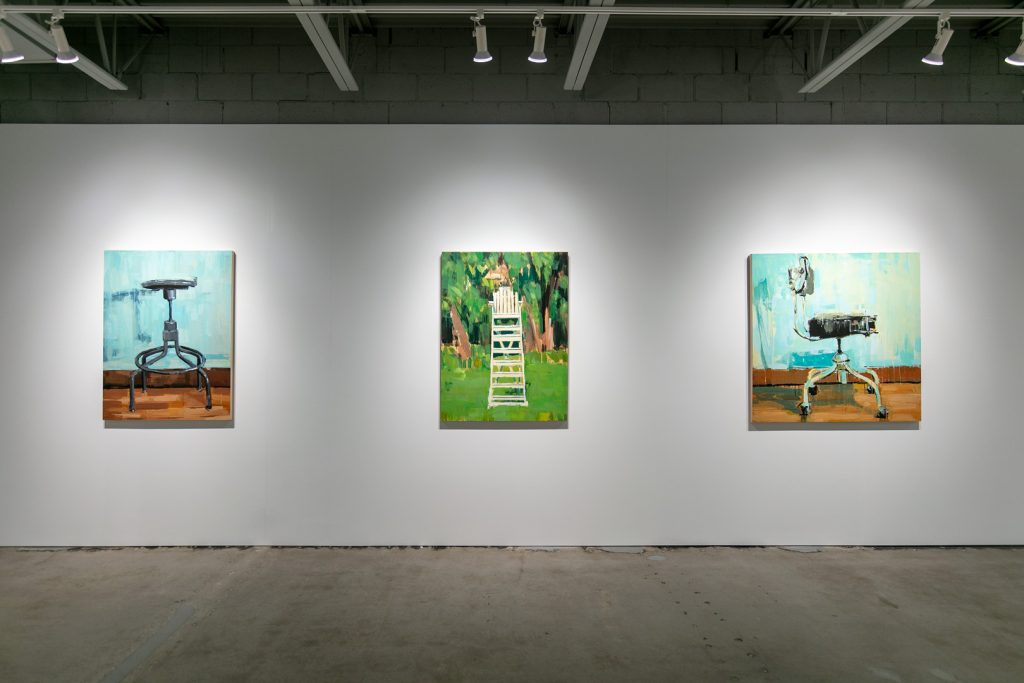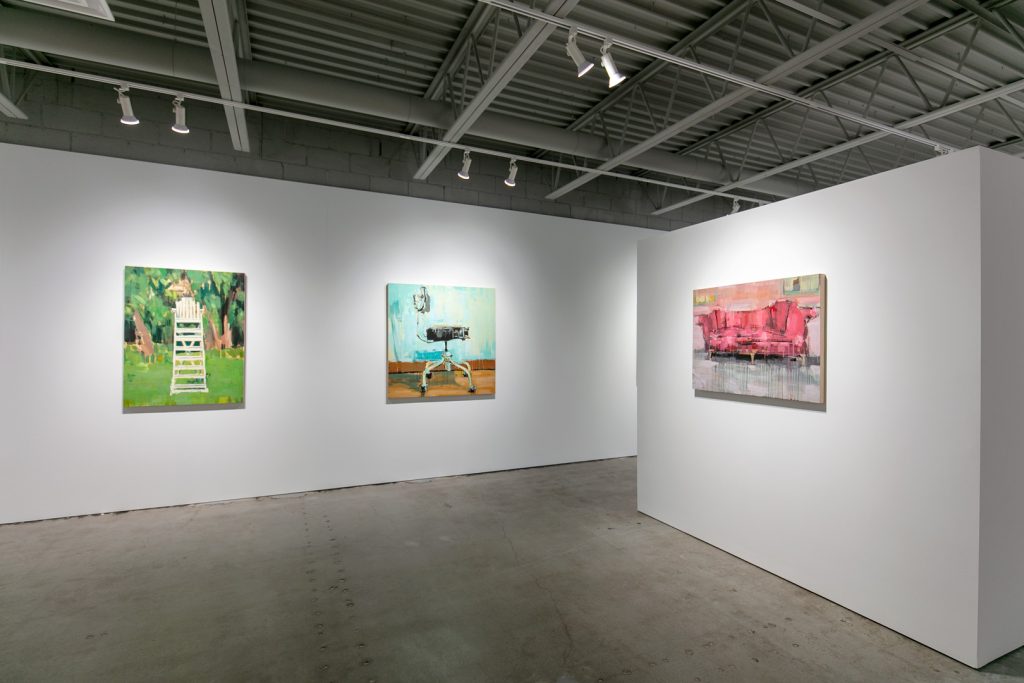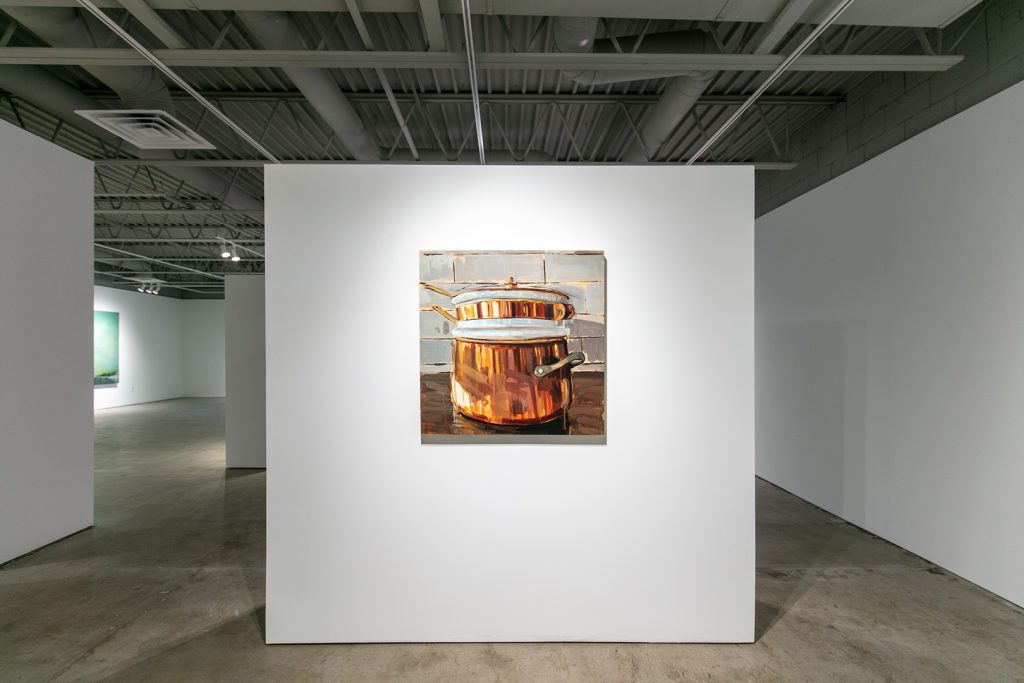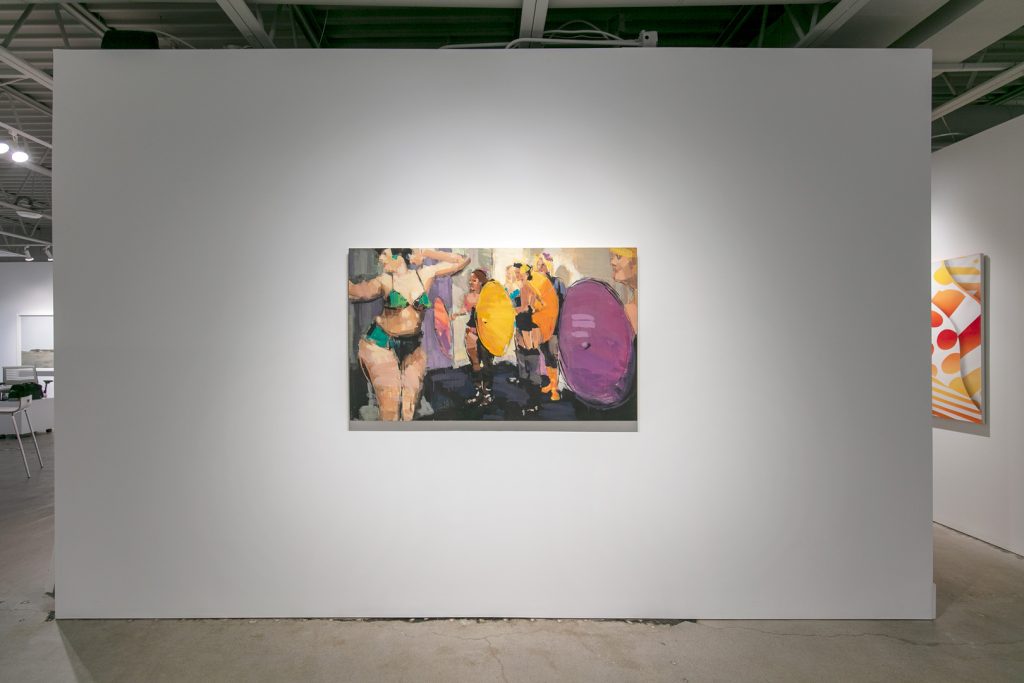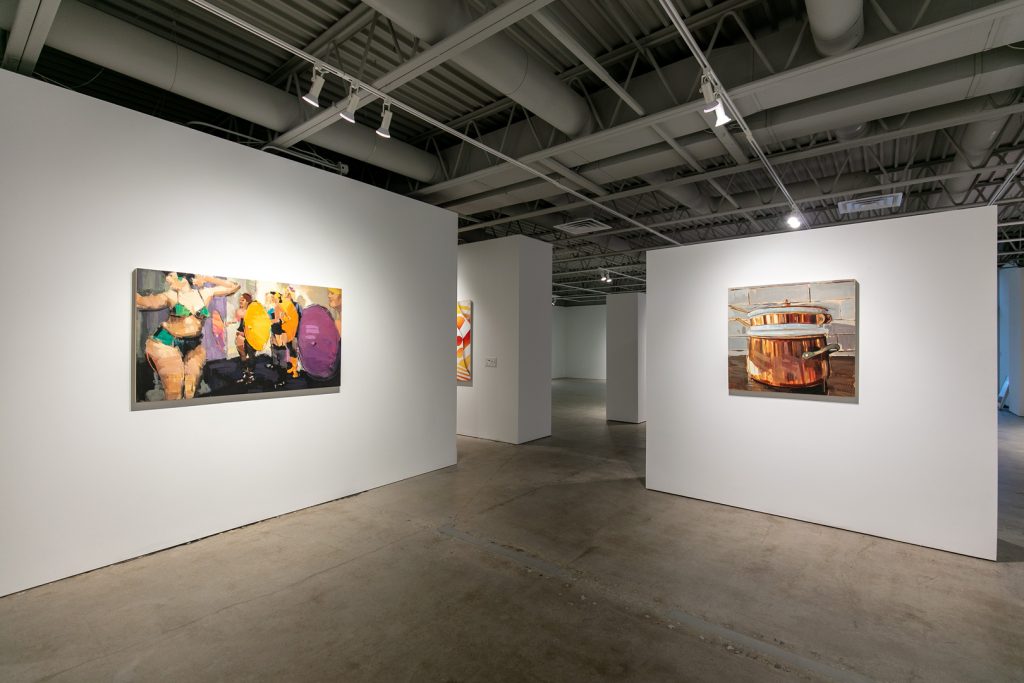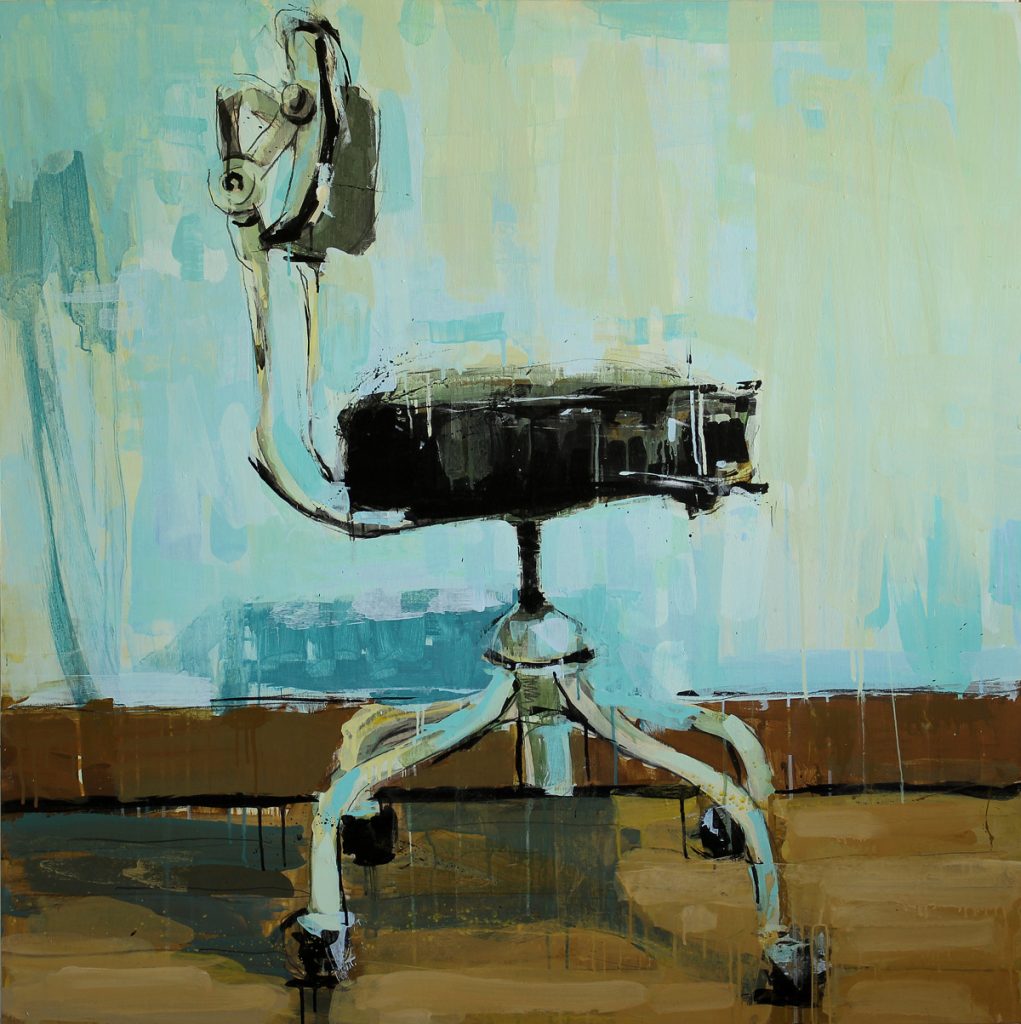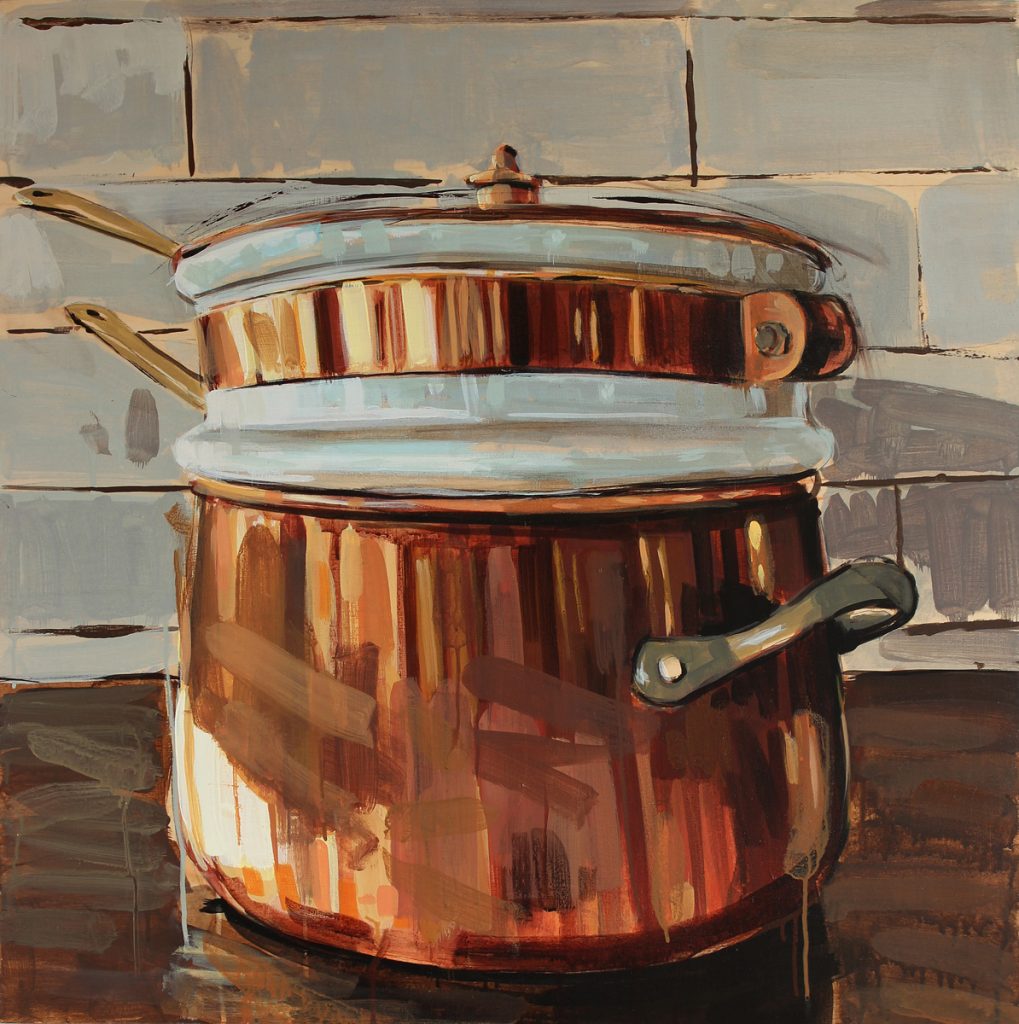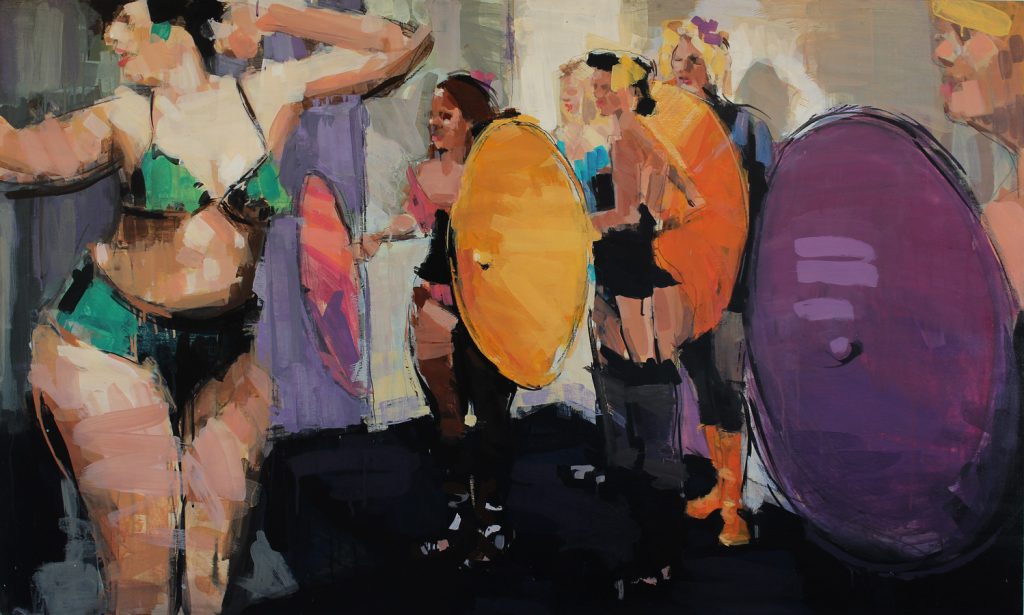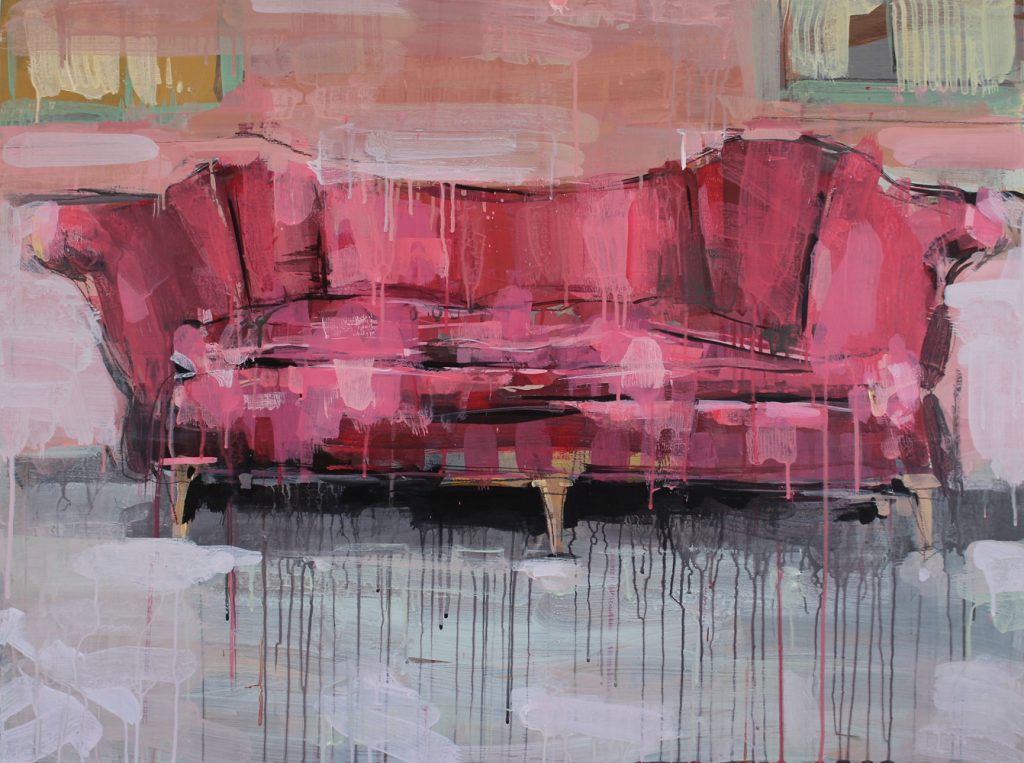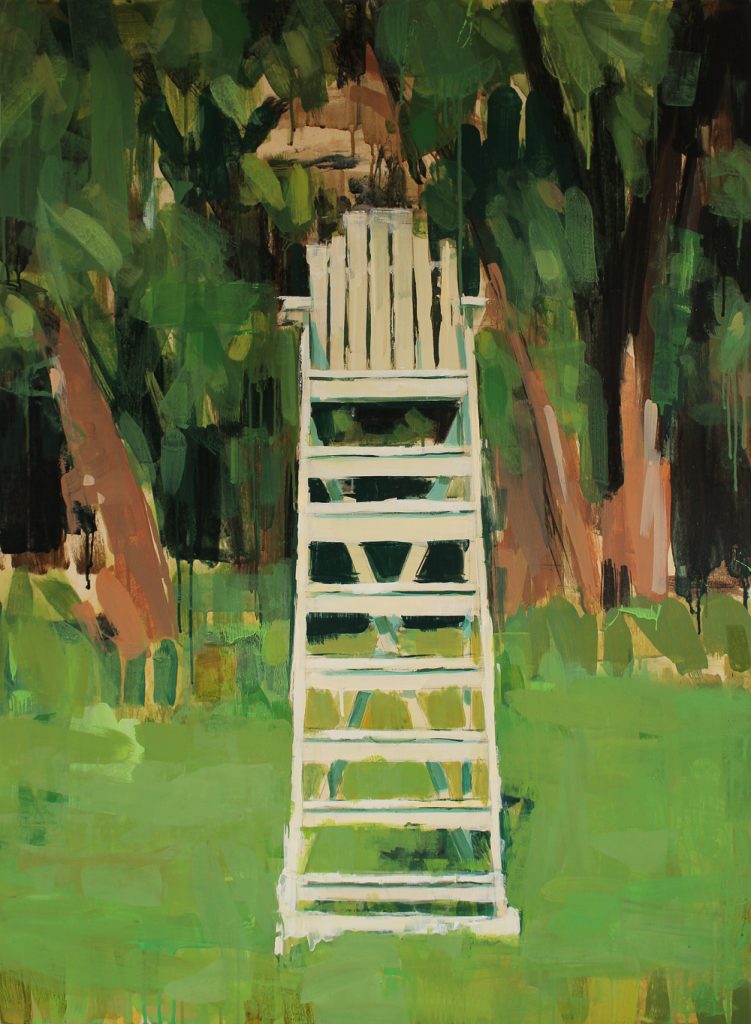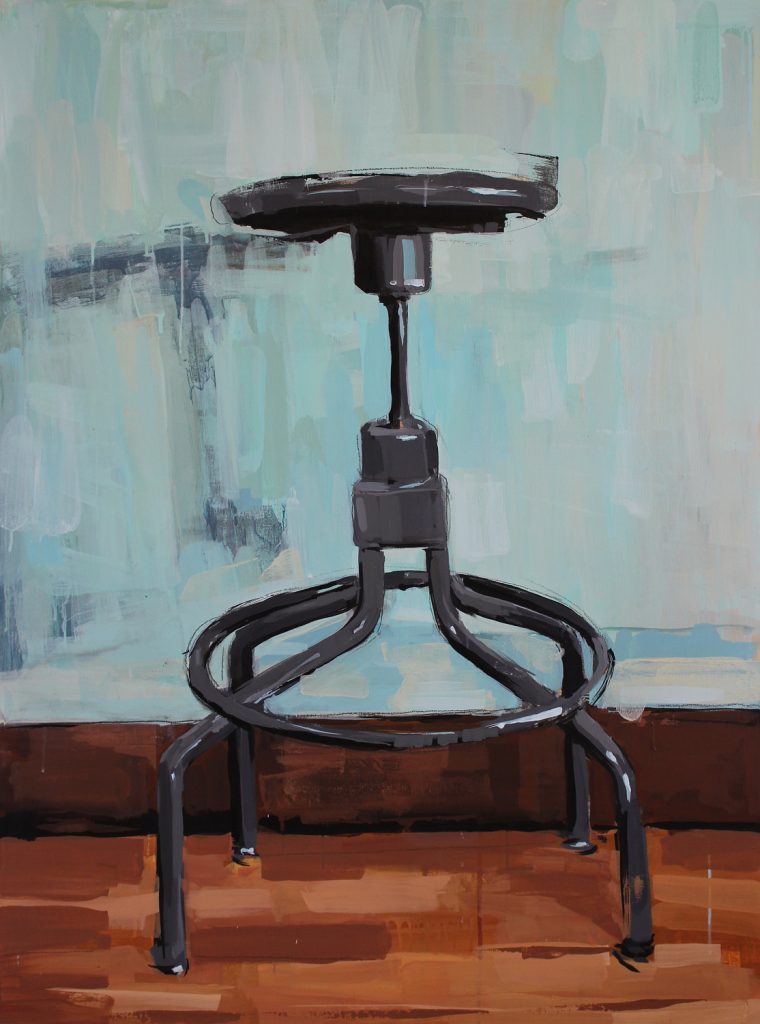The “Ecstatic Uncertainty” of Dean Kube
Kansas City-based artist Dean Kube is, first and foremost, a figurative painter. His paintings evoke the work of Lucien Freud, for Kube makes animate the inanimate nature of a two-dimensional image—be it sofa or nude, self or friend, foliage or chair. He has worked with performing artists this past decade, and they have influenced how he paints. He says he “creates a sense of ‘slight movement’ through [his] brush strokes, so the work has a sense of immediacy and ‘life’,” and that his work is also “inspired by ordinary objects or everyday moments that are often overlooked or forgotten.” Instead of objectifying the figure, Kube humanizes it; he humanizes the object, as well.
Painting what he calls “malleable energies,” Kube understands that objects often end up telling the stories of those who choose them, discard them, inherit them, use them. The utilitarianism that is so apparent in the work, intends to underscore the human attachment, imbuement—namely, our existence. The history of the things procured, used, looked upon, are part of the intrigue in avoiding true obsolescence, which has come to mark the contemporary age. Design and form, function and identity; we make the objects, we use the objects, Kube paints them, and we, the viewer, absorb the story it tells through style and stroke.
Kube earned his BFA from the Kansas City Art Institute in 1993. That same year, he received the Patron Award from The LRC Gallery in Wisconsin, and since, has been exhibiting all over the country, with a group show at the D’Lan Contemporary Art Space in Brisbane, Australia, as well. For his first showing with Moberg Gallery, Kube has chosen a “group portrait” and numerous “object portraits,” the majority of which is seating—chairs, stool, a pink couch.
The term occupancy comes to mind when looking at Kube’s work: Intimacy and self-reflection compel his paintings, drawings, and prints. Kube considers the object subjects as “inspired by the presence and absence of the human figure”—there is a re/unification of personality and materiality (both represented and of the painting itself). His chair portraits are reminiscent of paintings by the New Leipzig School artist, Matthias Weischer. By figuration and abstraction, this school of artists emerged across shifting borderlines: a history of cultural, geographical, social and political disunification. For Kube, his technique feels like a homing in on the environment of self and how that is and will be always relational, thereby in a constant state of unifying—connecting who we are with where we function, how we function, and with what and whom:
Self
The “Life and Times of a Studio Chair” is a portrayal of myself. I have owned this chair for over 20 years and was always intrigued by the simplicity of its design and past and felt it should be immortalized. The chair has really absorbed the energy of my studios, and [has taken] on a sense of my own being. The “Studio Stool” is one of my recent acquisitions. I have had this stool for close to 8 years and bought it to paint and capture the essence and personality of it. I have always envisioned this stool to be in some creative environment, whether it would be in a studio of a designer or architect. I will never know, but this object intrigues me to this day.
Other
The “Copper Pot” is a portrait of Kansas City pastry chef, Megan Garrelts. We collaborated on a dish inspired by my work and I created a non-traditional portrait using her favorite copper pot. It was a unique way of looking and analyzing a person in a different way.
Community, Large & Small
“Empowering Celebration” was inspired by a live performance I attended. I found it to be powerful and beautiful without any stereotypes or “objectifying” perspective […] it inspired me to want to capture that authenticity in a painting.
The “Pink Couch” is a reaction to our “throw-away society” mentality. This once, beautiful and adorned couch sat outside along a side a building exposed to the elements, slowly decomposing. The years of comfort now laid out for tomorrow’s trash—all the stories, laughter, heart ache, a first kiss, holidays and family gatherings…so much to be captured.
The “Neighborhood Throne” is a lighthearted painting representing the annual Mardi Gras parade in my neighborhood. A single person sits atop the mighty chair as people down below spray silly string and throw toilet paper and beads around them until they are no longer recognizable. The chair is quite majestic and often sits abandoned after the event throughout the year.
***
“A Story Without a Beginning”—Kube’s painting of a vintage manual typewriter, in the palette and style of the studio chair and stool—is the paradoxical opening of the story, which of course already has one, but also holds the potential of all stories. In essence, it contains the ecstatic uncertainty of future, making clear that the trinity of “me, you, us,” or “I, you, we”—even when “it” is one of the three—is Kube’s way of making whole the union of his artwork and practice. The taking on of life, from one person to another, one thing to another, and person to thing, becomes the particular kinetics of his work.
See Kube’s paintings in The Winter Group Show, opening virtually on February 19, 2021, and find warmth in artwork that aims to exchange, conserve, and re/compose energy for us.
